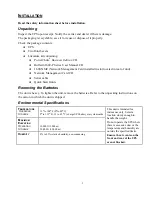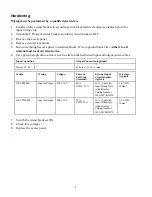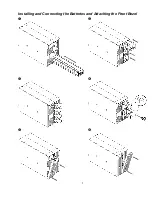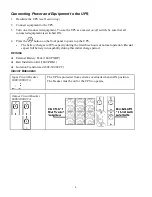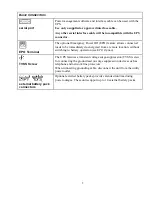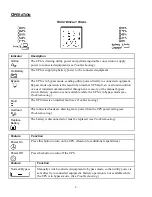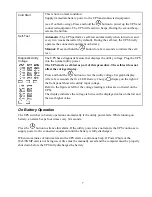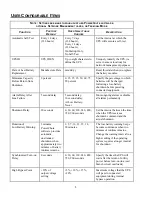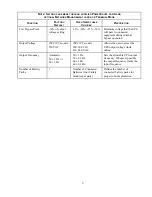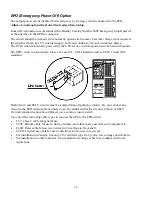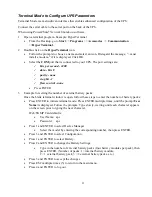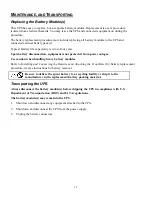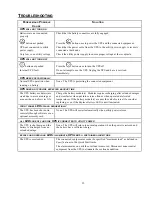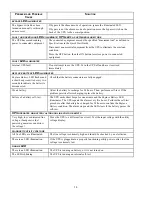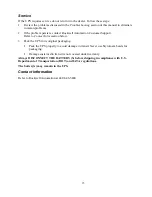
13
T
ROUBLESHOOTING
P
ROBLEM AND
P
OSSIBLE
C
AUSE
S
OLUTION
UPS
WILL NOT TURN ON
Batteries are not connected
properly.
Check that the battery connectors are fully engaged.
button not pushed.
Press the
button once to power the UPS and the connected equipment.
UPS not connected to utility
power supply.
Check that the power cable from the UPS to the utility power supply is securely
connected at both ends.
Very low or no utility voltage.
Check the utility power supply to ensure proper voltage at the receptacle.
UPS
WILL NOT TURN OFF
button not pushed.
Press the
button once to turn the UPS off.
Internal UPS fault.
Do not attempt to use the UPS. Unplug the UPS and have it serviced
immediately.
UPS
BEEPS OCCASIONALLY
Normal UPS operation when
running on battery.
None. The UPS is protecting the connected equipment.
UPS
DOES NOT PROVIDE EXPECTED BACKUP TIME
The UPS battery module(s) are
weak due to a recent outage or
are near the end of service life.
Charge the battery module(s). Modules require recharging after extended outages
and wear faster when put into service often or when operated at elevated
temperatures. If the battery module(s) are near the end of service life, consider
replacing, even if the
Replace Ba ttery
LED is not illuminated.
FRONT PANEL
LED
S FLASH SEQUENTIALLY
The UPS has been shut down
remotely through software or an
optional accessory card.
None. The UPS will restart automatically when utility power returns.
ALL
LED
S ARE OFF AND THE
UPS
IS CONNECTED TO UTI LITY POWER
The UPS is shut down and the
battery is discharged from an
extended outage.
None. The UPS will return to normal operation when the power is restored and
the ba ttery has a sufficient charge.
BYPASS AND OVERLOAD
LED
S ILLUMINATE
,
UPS
EMITS A SUSTAINED ALARM TONE
The UPS is overloaded.
The connected equipment exceeds the specified “maximum load” as defined in
Specifications
in the Quick Start Guide.
The alarm remains on until the overload is removed. Disconnect nonessential
equipment from the UPS to eliminate the overload condition.


